
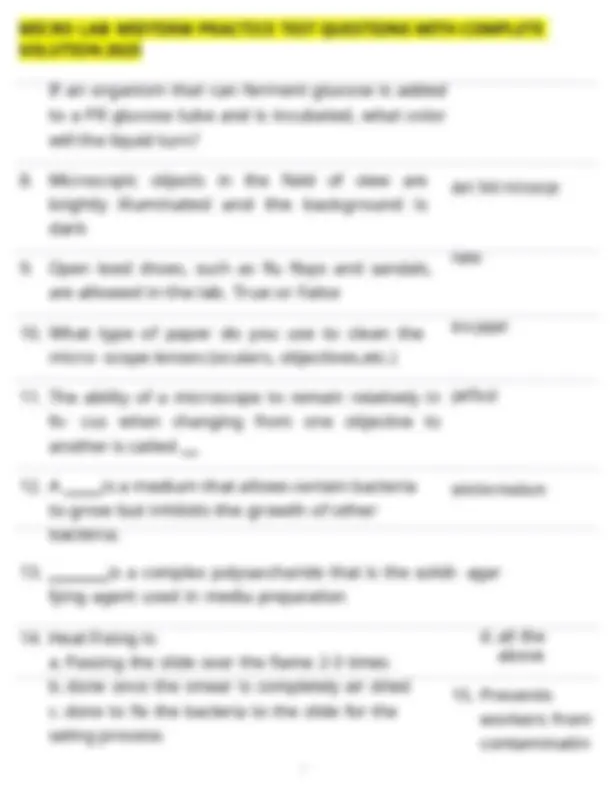
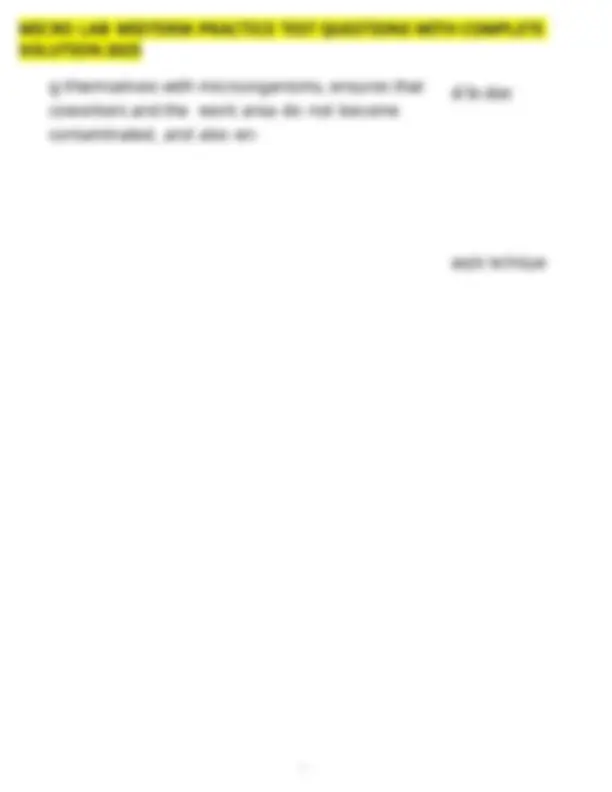

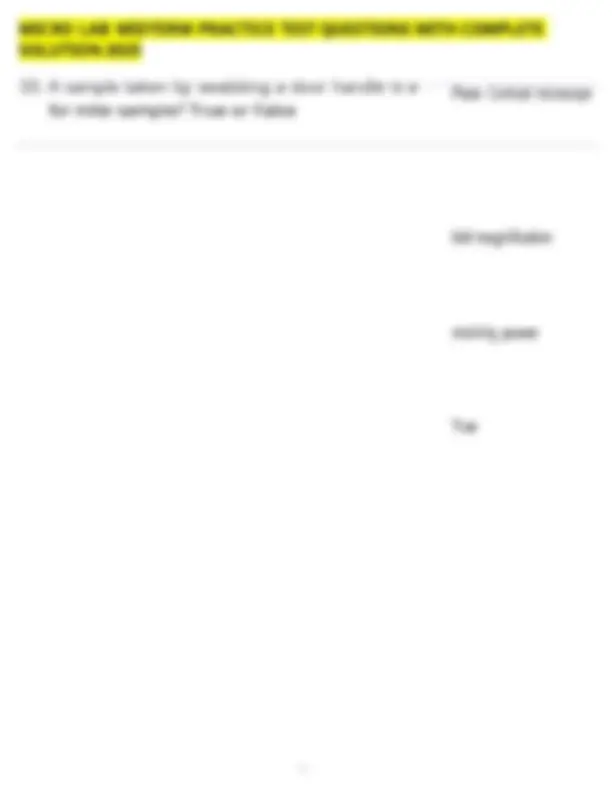
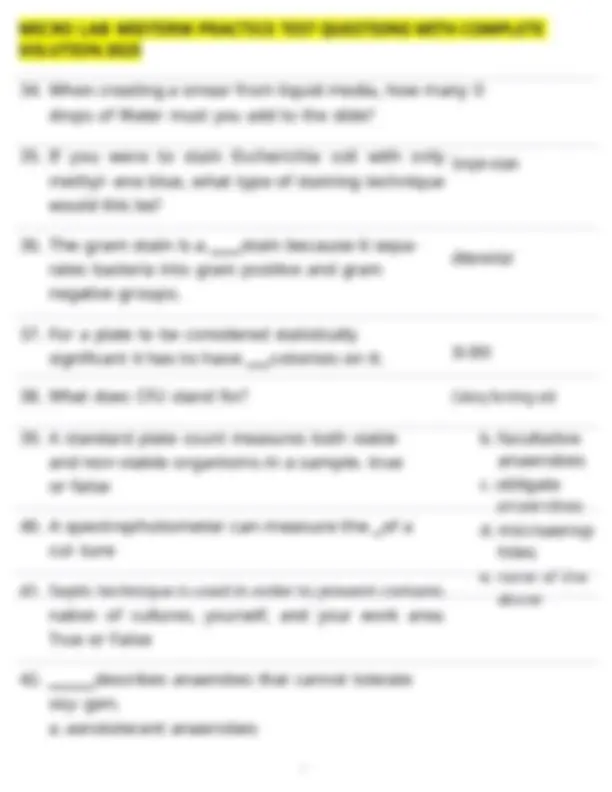
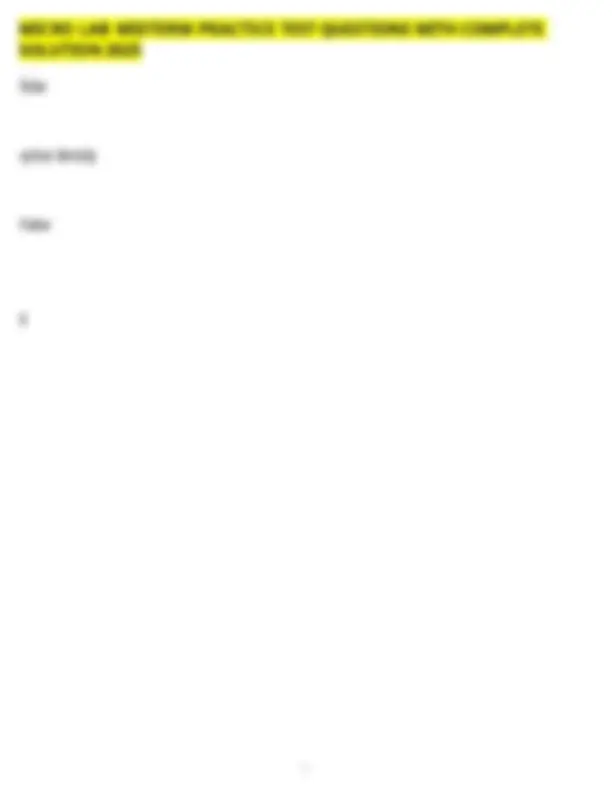
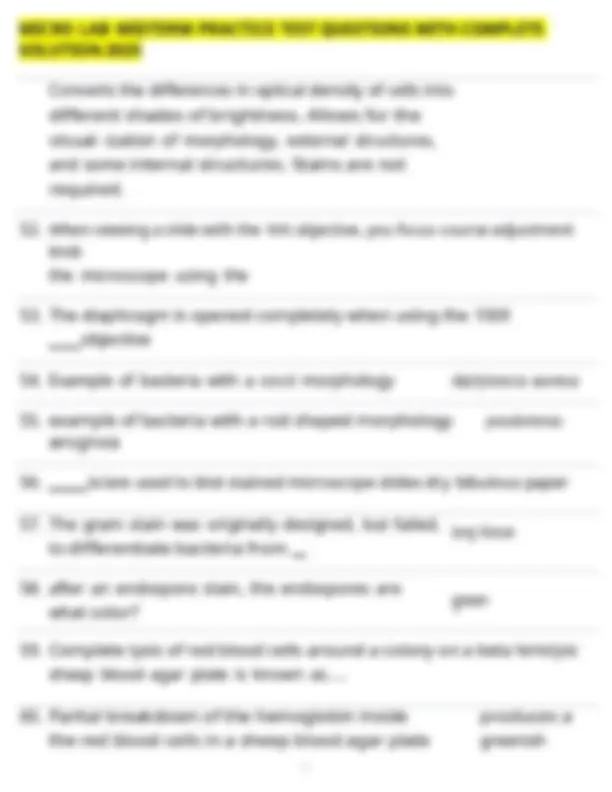
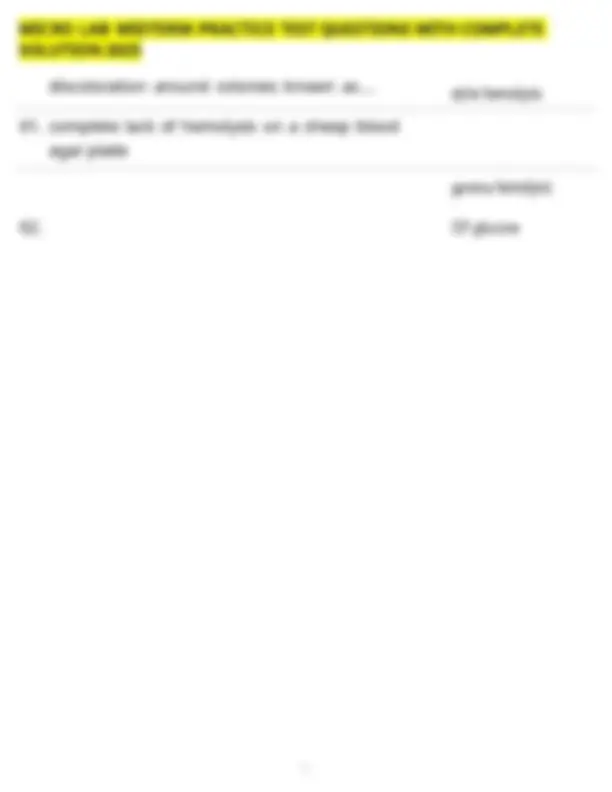



Study with the several resources on Docsity

Earn points by helping other students or get them with a premium plan


Prepare for your exams
Study with the several resources on Docsity

Earn points to download
Earn points by helping other students or get them with a premium plan
Community
Ask the community for help and clear up your study doubts
Discover the best universities in your country according to Docsity users
Free resources
Download our free guides on studying techniques, anxiety management strategies, and thesis advice from Docsity tutors
MICRO LAB MIDTERM PRACTICE TEST QUESTIONS WITH COMPLETE SOLUTION 2025
Typology: Exams
1 / 15

This page cannot be seen from the preview
Don't miss anything!










1 / 15
2 / 15
a. sharps container b. biohazard can c. sharps container d. regular garbage can e. biohazard can f. discard cart Heat BSL 4
g themselves with microorganisms, ensures that coworkers and the work area do not become contaminated, and also en- all the above aseptic technique
sures that microbial cultures do not become unneces- sarily contaminated with unwanted microorganisms.
false optical density False E
False D
Converts the differences in optical density of cells into different shades of brightness. Allows for the visual- ization of morphology, external structures, and some internal structures. Stains are not required.
discoloration around colonies known as....